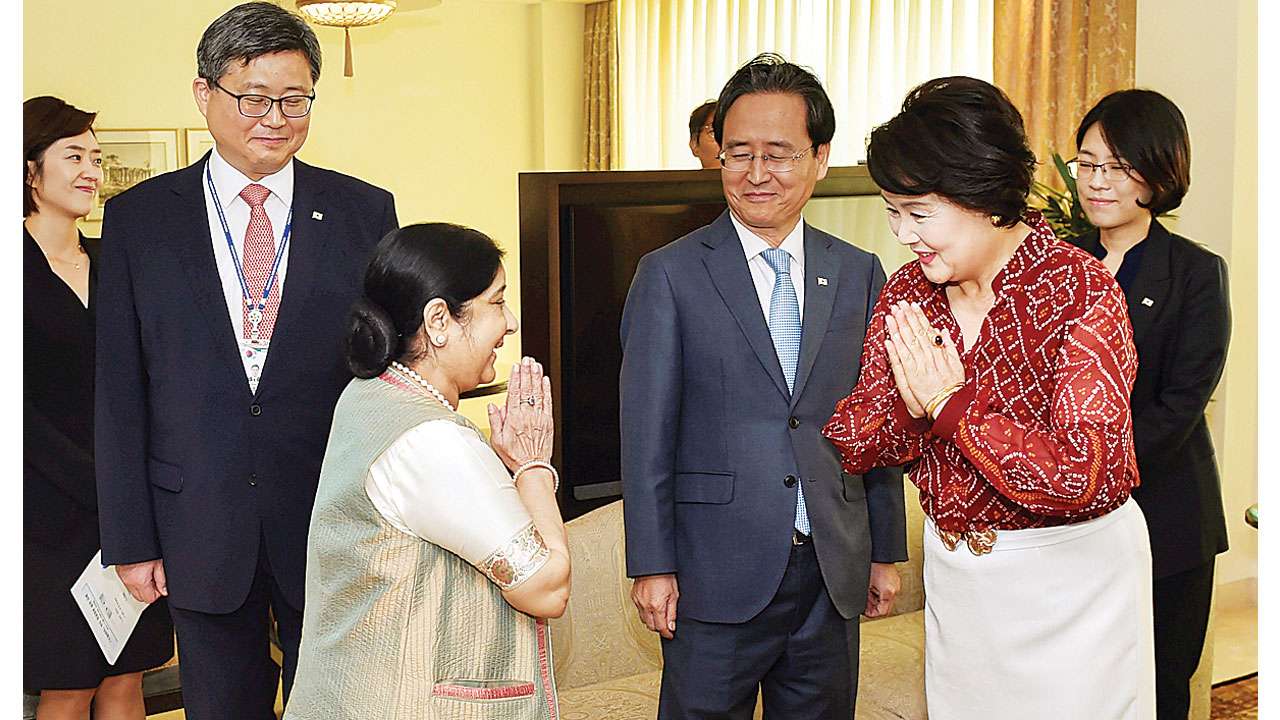DNA Edit: For the Queen – S Korea, India’s shared past in the light of Deepotsav

External Affairs Minister Sushma Swaraj greets South Korean First Lady Kim Jung-sook in New Delhi , PTI
Very few people in India know that our country has deep connections with South Korea for which the country’s First Lady Kim Jung-sook attended Uttar Pradesh government’s Deepotsav celebrations. Jung-sook was reviving an age-old bond that was relegated to obscurity till recently. History has it that some 2000 years ago, a princess from Ayodhya had travelled to South Korea, became a queen and started a dynasty called Karak. Today, more than 60 lakh people in South Korea claim their ancestry to the princess of Ayodhya called Suriratna who is known to them as Queen Hwang-ok.
This familial bond was discovered in 2000-01 during AB Vajpayee’s premiership. Such was the enthusiasm between the two countries that the mayors of Ayodhya and Kimhae, the town where the Karak dynasty was based, signed a Sister City Bond in March 2001 when South Korea promised to build monuments in Ayodhya for their ancient queen. Then there was a long lull on the official front and 2018 offered yet another opportunity to rejuvenate ties. But the people to people meeting has continued in the meanwhile.
However, what will give a major boost to the cultural-historical connect is the expansion of the Queen Suriratna Memorial Project that was inaugurated in 2001. The monument was built in Korean style using 7,300 kilograms of stone shipped from the country. It became an enduring symbol of a common cultural ground to strengthen diplomatic-economic relationship between the two countries. In the glow of three lakh earthen lamps on the banks of Saryu river in Ayodhya, the present paid tribute to the past on Tuesday to pave the way for future to flourish. A perfect example of how history and myths combine to create a powerful narrative to bridge the distance between India and South Korea.